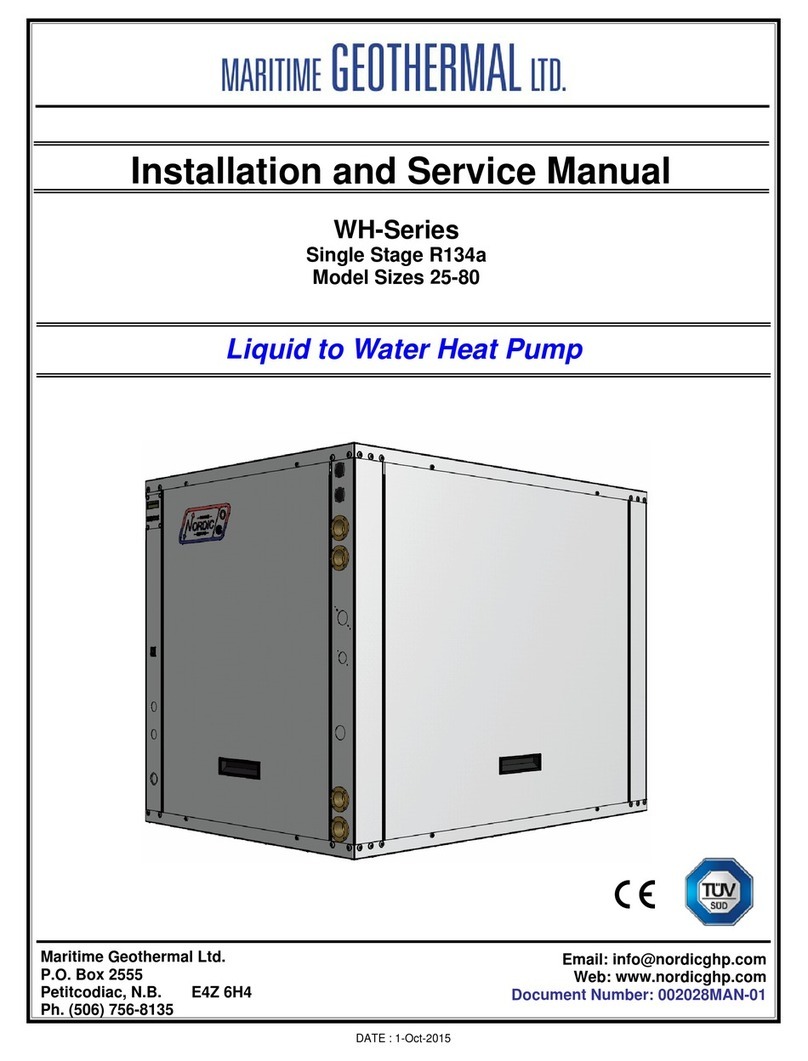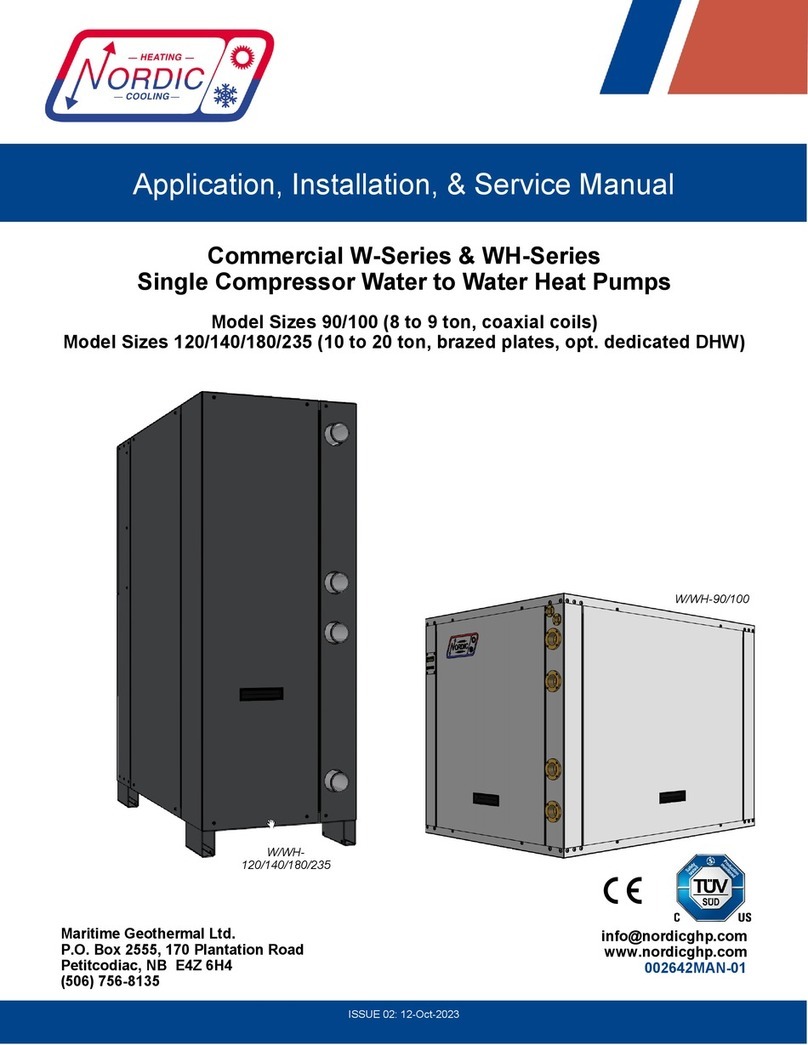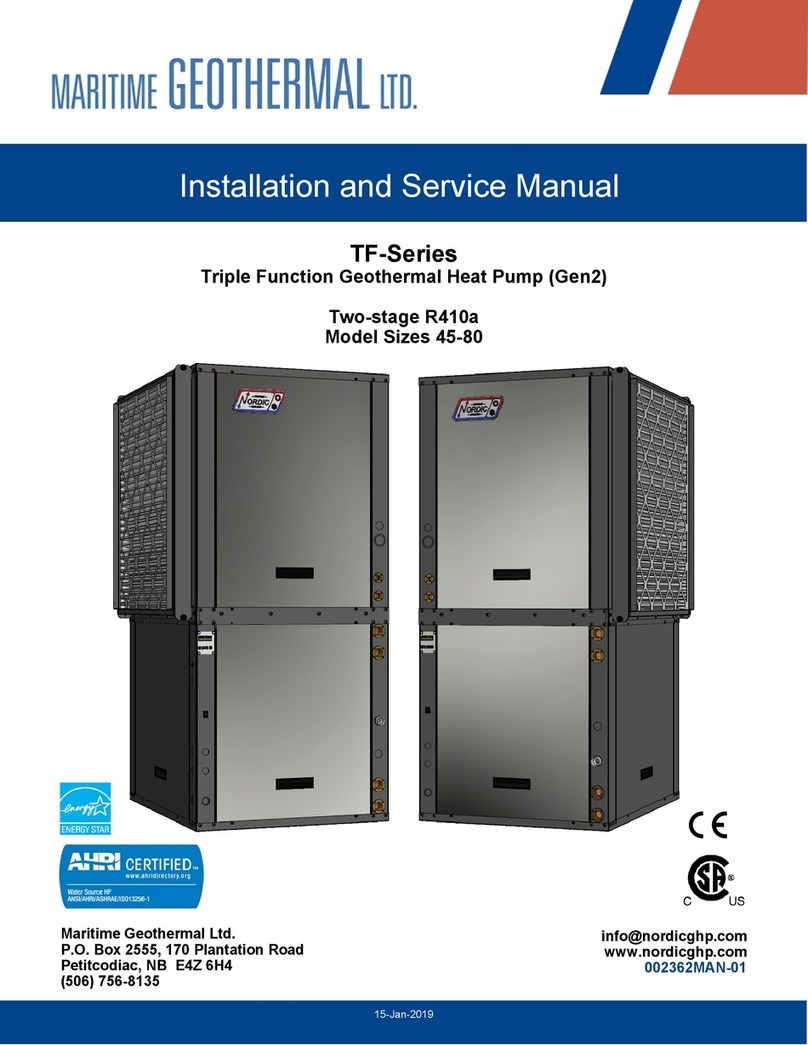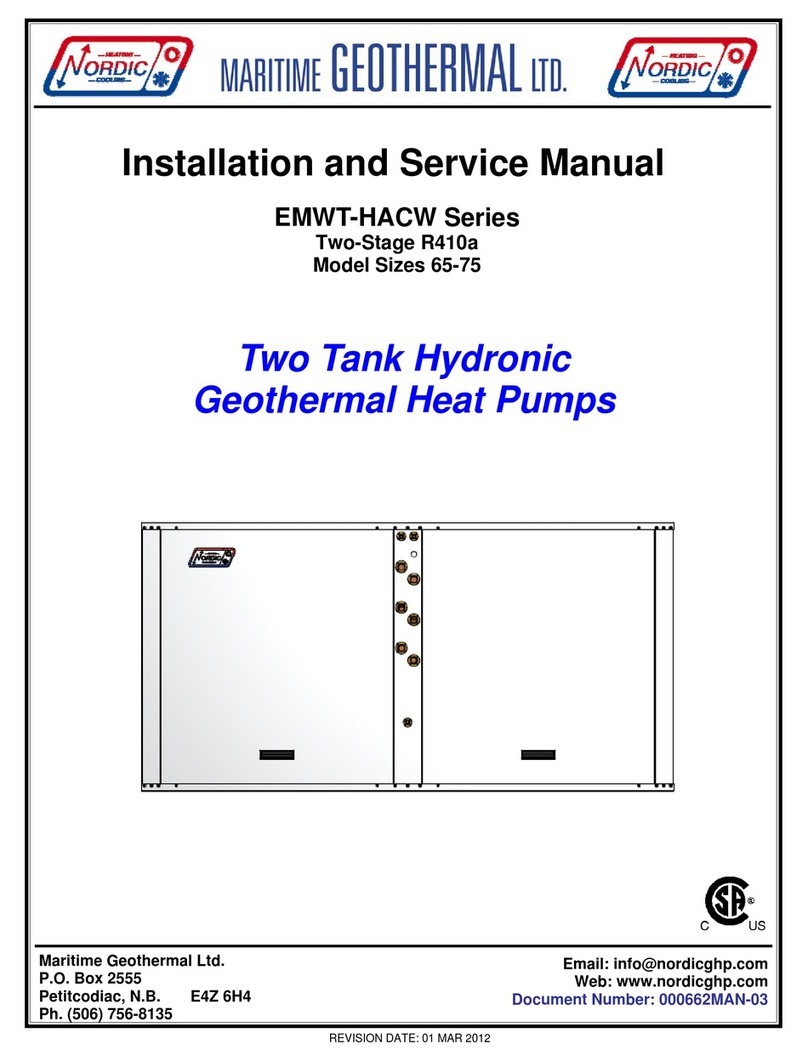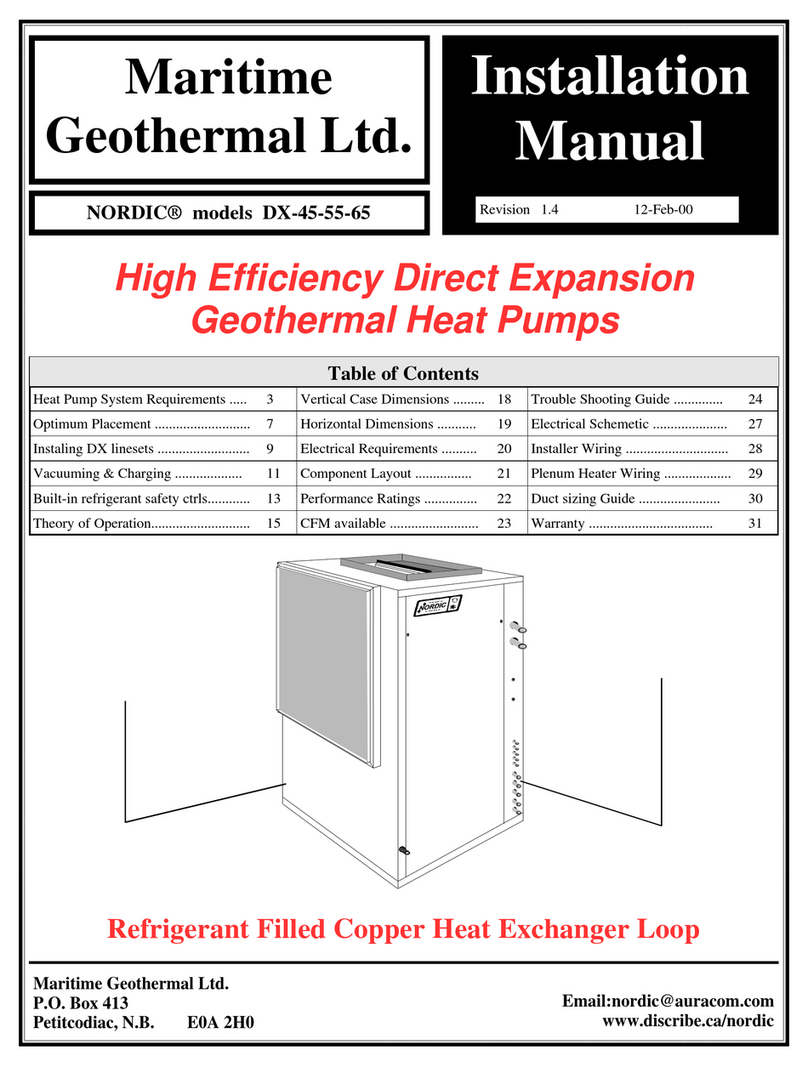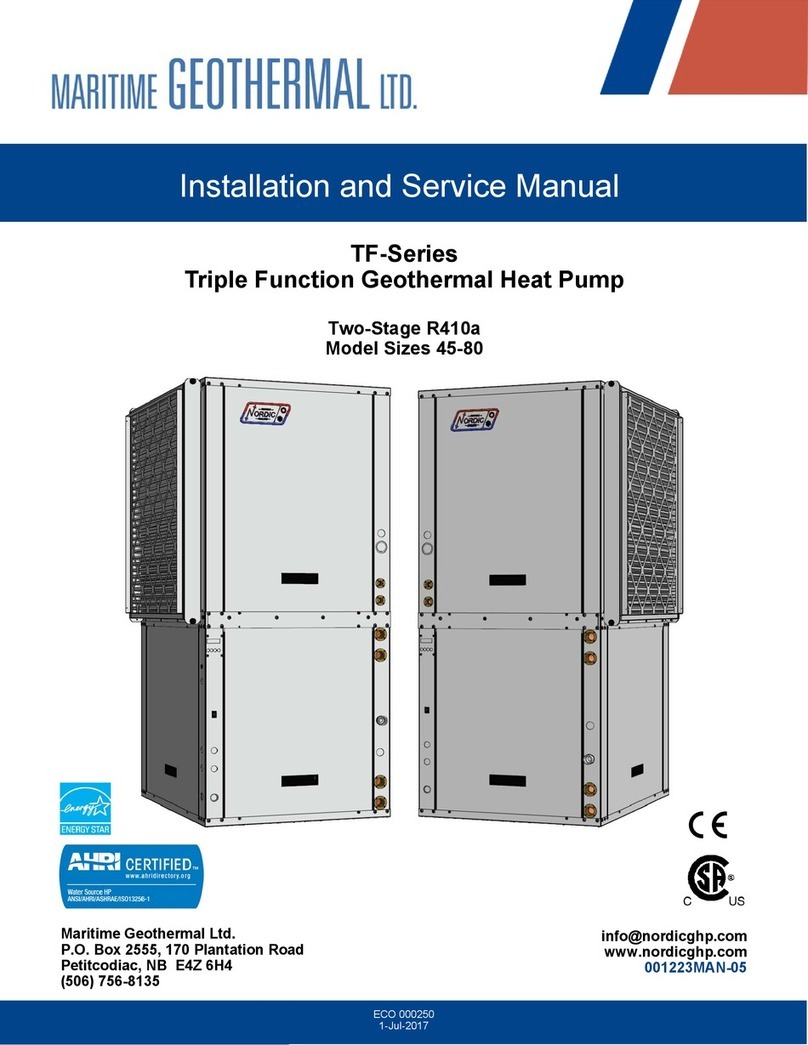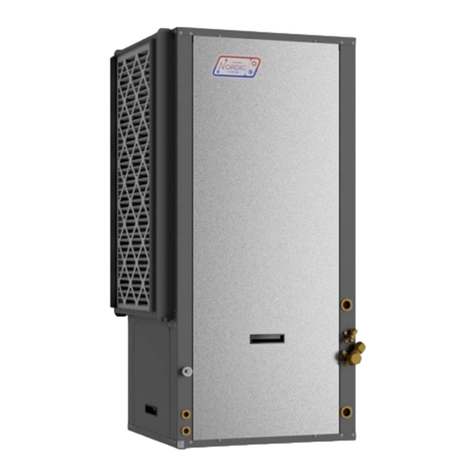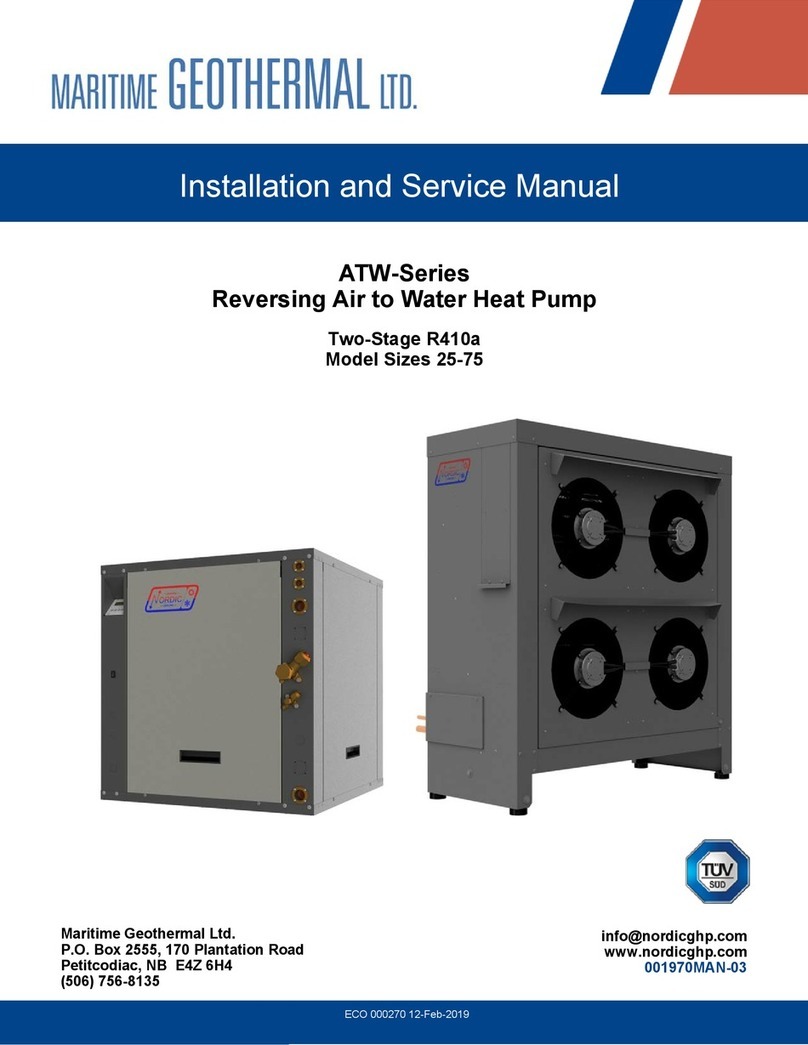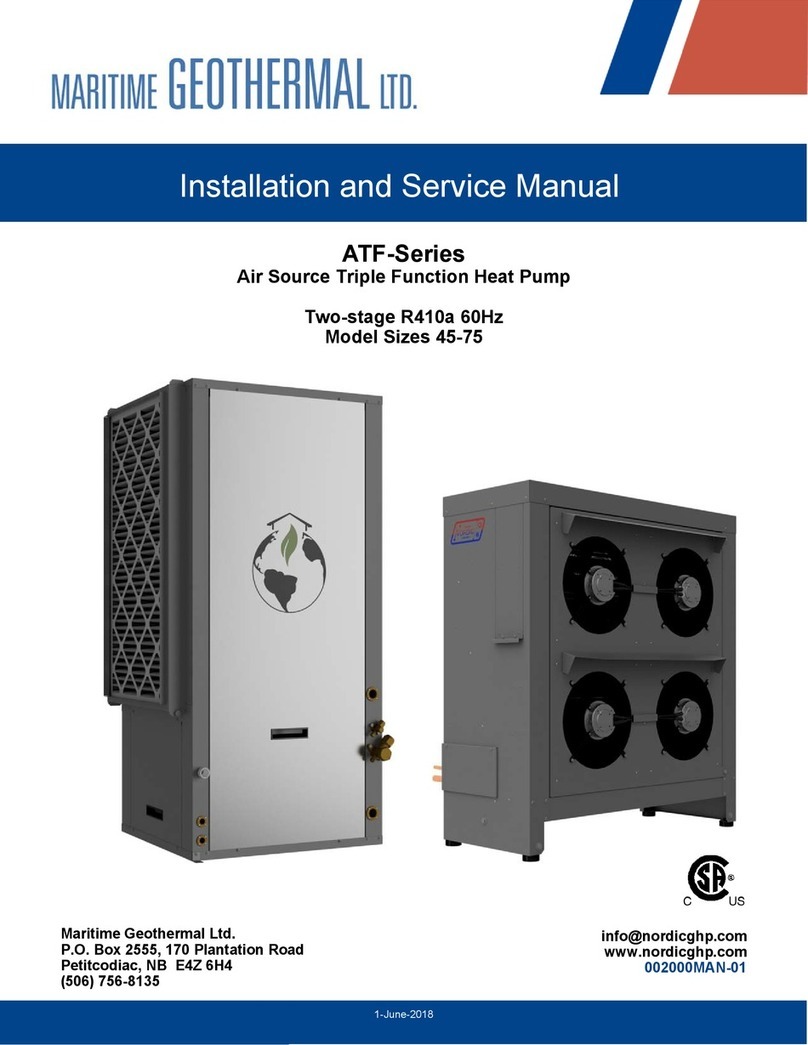
Page .... 7
Maritime Geothermal Ltd. 17-Feb-00
Refrigeration Cycle
The general refrigeration cycle of our EMDX machine is
similar in nature to a conventional water-to-air or water-to-
water heat pump in that there exist a compressor, expansion
device, reversing valve, and refrigerant-to-air heat exchanger.
Conventional technology concerned with heat pumps re-
lies upon the transfer of heat from the ground by means of a
secondary heat exchanger system and working fluid, e.g., wa-
ter, which is pumped to the geothermal unit located in the
heated structure. The conventional heat pump has it’s own
internal primary heat exchanger which extracts heat (heating
mode) or rejects heat (cooling mode) from this water, which
is then pumped back to the earth to be reheated or cooled.
EMDX systems similarly use a ground coil system, how-
ever, the working fluid is a refrigerant and the copper ground-
loop is the primary heat exchanger. Such geothermal heat ex-
change is an efficient and effective way of achieving heat ex-
change in heating and air conditioning systems, and especially
heat pump type systems. Since the ground temperature is rela-
tively constant at 7 o. at a depth 2 m below the frost line, the
available heat is constant.
The elimination of the secondary earth heat exchanger
(typically plastic in nature) and its associated working fluid
reduces the temperature difference required between the
ground and the evaporating refrigerant yielding a higher suc-
tion pressure than a conventional system under similar cir-
cumstances and thus a higher efficiency.
Many attempts have been made in the past to develop suc-
cessful direct coupled heat pumps for residential and commer-
cial uses. These attempts have failed adequately to meet a
number of requirements associated with an economically and
functionally viable system. Some of the shortcomings in-
cluded:
1. Inadequate oil return to the compressor primarily in the
heating mode.
2. Inadequate evaporator length and spacing for properly
extracting heat from the earth resulting in low capacity
and low efficiency of the systems.
3. Refrigerant charges in the range of 10 times greater than
a similar capacity conventional geothermal heat pump.
4. Approximately 3 times as much refrigerant required in
the cooling mode as is required in the heating mode.
5. Lack of a proper means to store additional refrigerant re-
quired during the cooling operation but not needed during
the heating mode.
6. Inefficient and ineffective method to account for vastly
varying condenser capability depending on ground tem-
perature.
7. Difficulty in providing an easy to install system of earth
exchanger loops.
The NORDIC® solution has been to start with a clean
new concept and to design a unit from the ground up. We
started by developing an evaporator system that would yield
the best performance to pressure drop factor and which would
impact enough area to maintain a minimum suction pressure
above 276 kPa The current horizontal groundloop comprises
107 m per ton of 13 mm OD copper tubing. A 3 ton system
would have 3 such loops working in parallel during the heat-
ing mode. Refrigerant charge had been determined to be 1.8
kg. of refrigerant per loop. These 13 mm copper loops main-
tain sufficient velocity at all times to insure adequate oil re-
turn. During cooling mode the machine automatically selects
one or more loops based on discharge pressure to act as the
condenser. As the discharge pressure builds to a predeter-
mined point, the on-board computer selects the most appropri-
ate combination of groundloops to dissipate the heat at the
lowest cost to the homeowner. By intelligently controlling the
manner in which the condenser is utilized our total system
charge does not have to be altered nor does an excess charge
have to be stored anywhere.
EMDX Better than Current Technology
There are several advantages of “EMDX” technology
that are superior to conventional geothermal heat pumps of
both the “open loop” and “closed loop” variety. Listed below
are some of the reasons why “EMDX” technology is becom-
ing more attractive to Homeowners, Dealers and Utilities.
More Reliable.
•Fewer parts to the system.
•Does not require a supply and return well.
•Does not require a well pump or circulation pumps.
•No water heat exchanger and associated valving to cor-
rode, freeze and break.
More Efficient
The direct expansion principle allows the refrigerant to
come directly into contact with the earth, separated only by
copper tubing. During winter, maximum heat transfer takes
place at higher temperature than conventional groundloop
technology without the maintenance and electrical cost of cir-
culation pumps.
Less Maintenance
Only a sealed refrigeration circuit to maintain.
More Versatile
“EMDX” systems can be installed in a more confined area
than a conventional groundloop system, primarily because the
heat exchanger coil is much more efficient at transferring heat
